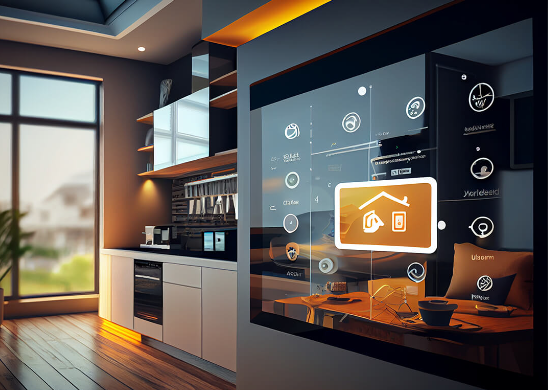In our increasingly interconnected world, the concept of a smart home has evolved from a futuristic dream to a tangible reality. Imagine being able to control every aspect of your living space, from the lighting to the security, all through a few taps on your smartphone. This is the promise of a smart home – a living environment that enhances convenience, efficiency, and security. In this guide, we’ll walk you through the essential steps of building a smart home that not only caters to your needs but also provides you with peace of mind.
Steps to Build a Smart Home
Step 1: Lay the Foundation with a Strong Network
The backbone of any smart home is a robust and reliable network. Before delving into smart devices and appliances, ensure that your home’s Wi-Fi network can handle the increased load. A high-speed, dual-band router is recommended to prevent lag and ensure seamless communication between devices.
Step 2: Choose Your Ecosystem
The smart home market is flooded with a variety of devices, each belonging to a specific ecosystem or platform. Popular options include Amazon Alexa, Google Assistant, and Apple HomeKit. Selecting an ecosystem that aligns with your preferences will allow your home security system or entertainment devices to work together harmoniously, streamlining your control and management.
Step 3: Embrace Smart Lighting
Smart lighting offers both convenience and energy savings. With smart bulbs and switches, you can control the ambiance of your home, adjust lighting schedules, and even simulate occupancy while you’re away.
Step 4: Secure Your Sanctuary
Home security is a paramount consideration. Install smart doorbell cameras, window and door sensors, and indoor cameras to build a comprehensive home security system, keeping a vigilant eye on your property. With real-time alerts and remote monitoring, you can enjoy peace of mind whether you’re at home or away.

Step 5: Elevate Your Entertainment
Transform your living room into a cinematic experience with smart TVs and streaming devices. Many smart TVs come with voice control features, allowing you to search for content, adjust volume, and even control other connected devices with just your voice.
Step 6: Consider a Smart Thermostat
A smart thermostat goes beyond basic temperature control. It learns your preferences and adapts to your schedule, optimizing energy usage and reducing utility bills. Some models even offer remote control via your smartphone.
Step 7: Automate Your Environment
Create customized routines that simplify your daily life. For instance, program your lights to brighten in the morning and dim at night gradually. Set up “goodnight” routines that lock doors, turn off lights, and adjust the thermostat with a single command.
Step 8: Integrate Voice Control
Voice assistants like Amazon Alexa and Google Assistant are at the heart of a smart home. They allow you to control devices, answer questions, and even provide weather updates using just your voice.
Step 9: Prioritize Privacy and Security
While the convenience of a smart home is undeniable, it’s crucial to prioritize privacy and security. Change default passwords on devices, regularly update firmware, and enable two-factor authentication when available.
In Conclusion
Overall, building a smart home is an exciting journey that enhances comfort, convenience, and security in your living space. By starting with a strong network, choosing the right ecosystem, and prioritizing your needs, you can gradually incorporate smart devices that align with your lifestyle. From lighting and security to entertainment and energy efficiency, the possibilities of a smart home are boundless – all at your fingertips. So, take the first step towards a smarter future and create a haven that responds to your every need.







